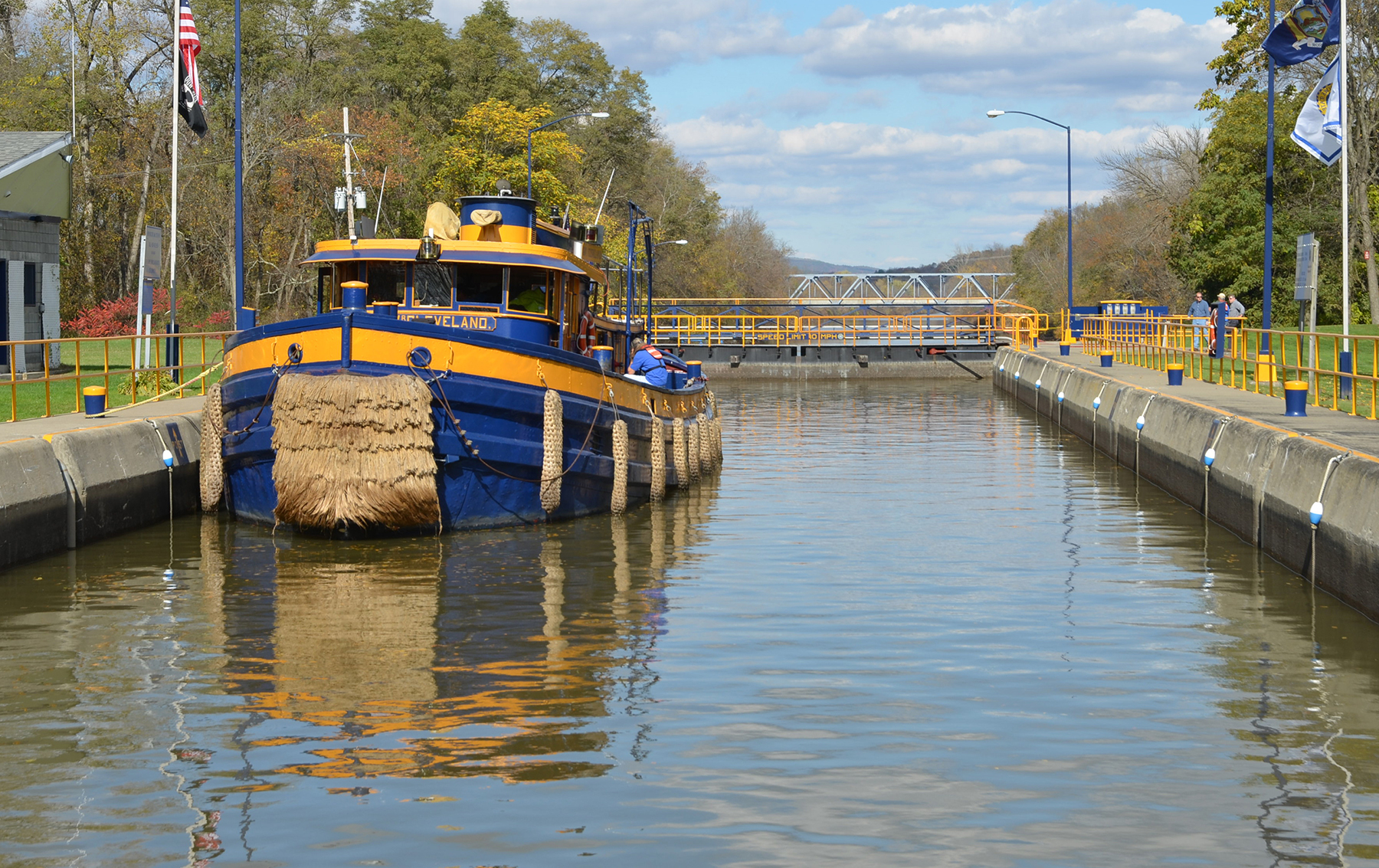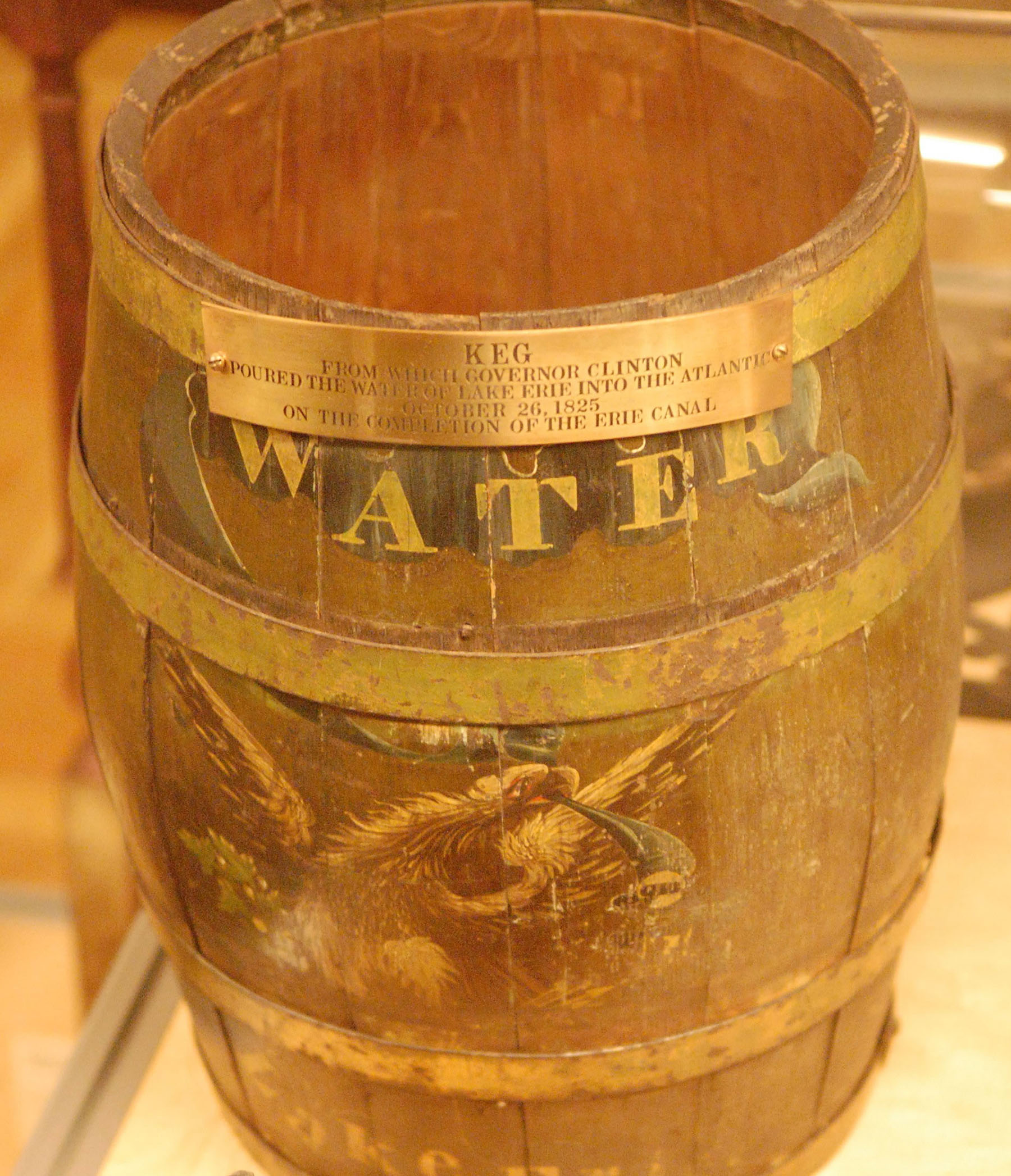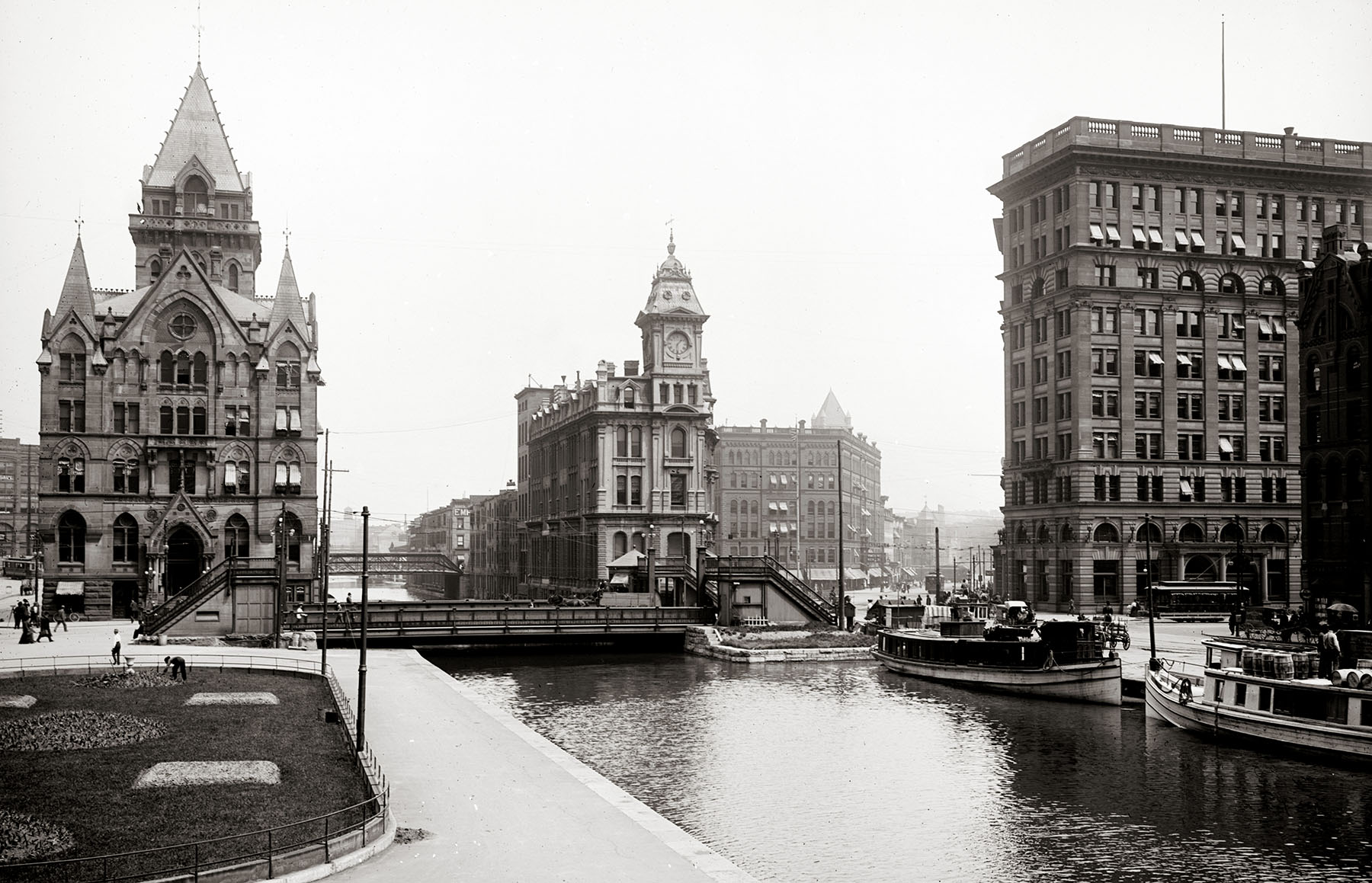 Duncan Hay via National Park Service
Duncan Hay via National Park ServiceOn Nov. 4, 1825, New York Gov. DeWitt Clinton led a flotilla of canal boats to celebrate the “Wedding of the Waters.”
After eight years of construction, with a price tag just north of $7 million (about $230 million in today’s dollars), the Erie Canal officially opened on Oct. 26. Eight days later, Clinton hoisted a keg of water from Lake Erie and poured it into the Atlantic Ocean to exalt the completion of the canal, often called America’s first “superhighway,” initially spanning 363 miles from Buffalo to Albany, New York.
Further reading:
- 5 things you didn’t know about the Erie Canal
- 19th-century Potomac River canal project was ambitious, costly
- Erie Canal gets a legislative boost
On the 200th anniversary of the canal’s opening, Reuben Hull, P.E., PMP, M.ASCE, civil regional manager for LaBella Associates and an independent historian of the canal, said the Erie Canal was the first public works effort of its kind in the U.S.
 Wikimedia
Wikimedia “The United States was only about 40 years old when the project started – and this was a huge, publicly led infrastructure project in what was effectively a fledgling nation,” he said.
After a flour merchant, Jesse Hawley, went bankrupt because he lacked the ability to get his wares to market, he penned a series of essays calling for a canal to help transport people and goods not just across New York state but across the country.
Hawley’s initial (and then anonymous) arguments led to the passing of the Canal Act of 1811, which gave a group of newly named canal commissioners the authority to start planning what would become a 4-foot-deep, 40-foot-wide canal cutting across the state. Formal construction began on July 4, 1817, in Rome, New York.
Setting the stage
The fact that the canal was completed in only eight years in an era in which there was little formal engineering training, Hull said, made this audacious project a “proving ground” for the future field of civil engineering. In fact, many now refer to the project as the nation’s first “practical school” of civil engineering.
“Prior to the Erie Canal, most of what would have been considered engineering would have involved rather simple construction of bridges, dams, or roadways,” Hull said. “The canal, however, was a much more complex undertaking, running more than 350 miles long.”
It also involved significant elevation changes and went through a lot of different types of countryside. As a result, the individuals working on the canal learned as they constructed it – and those lessons learned became the foundation for what is today the field of civil engineering.
In fact, just one year before the canal was completed, one of the country’s first engineering schools, now the Rensselaer Polytechnic Institute, opened its doors in Troy, New York, a mere stone’s throw from the human-made waterway. Its initial faculty were graduates of the so-called “Erie School of Engineering,” passing along what they learned on the job to educate the next generation of builders.
“The people who worked on the canal certainly leveraged things that had been done in Europe, but they had to adapt them for the needs of this 40-foot water path they were building through the wilderness,” Hull explained. “This included tree clearing. The engineers invented a large, mechanical device they could use to topple trees as well as another device, with a wheel that was 16 feet in diameter, that could remove the stumps.”
When asked what today’s civil engineers and infrastructure experts can take away from the long-ago project, Hull said the first lesson is that “we don’t do engineering works for the sake of engineering.”
“There was a need for this project. It was truly an economic development effort to open up the Eastern Seaboard to the Western frontier,” Hull said. “And the success of the Erie Canal – and it was an immediate success, so much so that it already needed to be widened only 20 years later – really is what made New York City the financial and economic capital of the country. So, I hope that today’s engineers take the time to recognize the why of any project and design accordingly.”
Standing the test of time
But Hull also believes today’s engineers should celebrate the creativity involved with constructing a piece of infrastructure that is still in use 200 years later, albeit in a very different economy.
 Detroit Publishing Co. via Wikimedia
Detroit Publishing Co. via Wikimedia“The Erie Canal really is a monument to our profession,” he said. “Going back to the on-the-fly problem-solving, there’s a lot we can learn from these pioneers. Because even today, where I can sit at my computer and do a design, I know that I will always run into something different or unforeseen and we need to make decisions in the field to solve it.
“It’s not unlike what the people who worked on the Erie Canal had to do when they ran into large swamps or embankments. They had to figure it out, just as we so often have to figure it out. So, I think that’s incredibly inspirational to civil engineers or civil engineers in training.”



